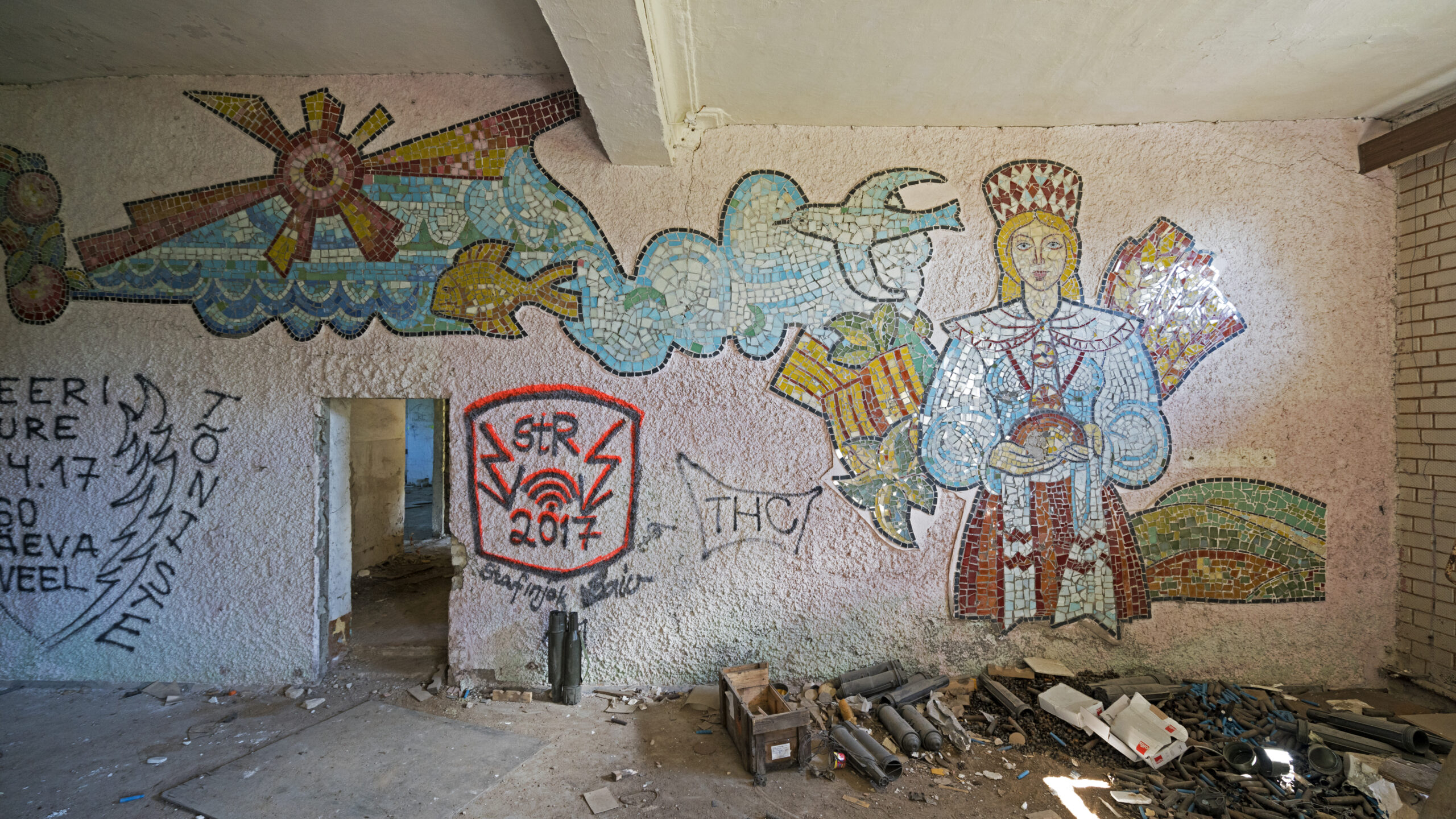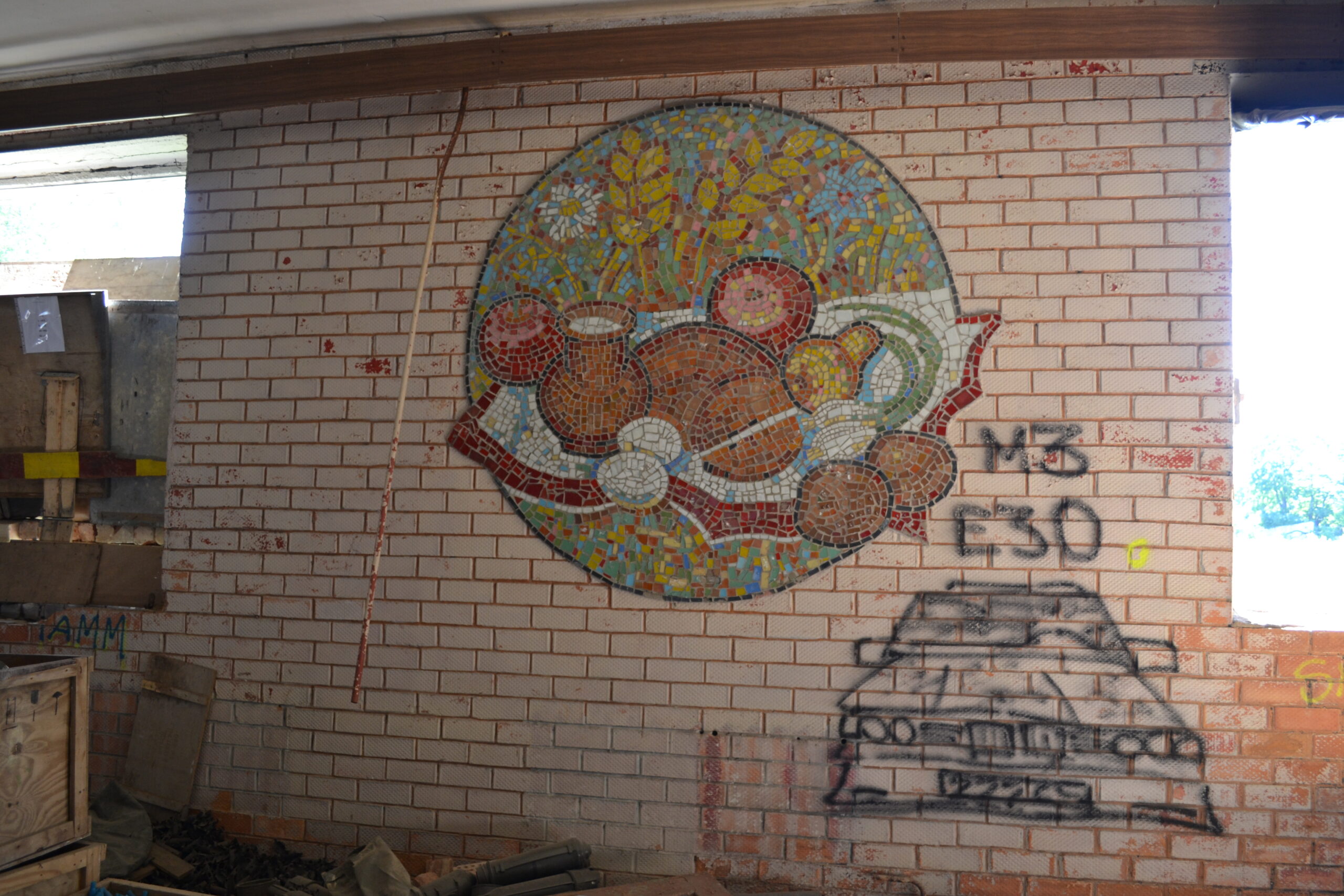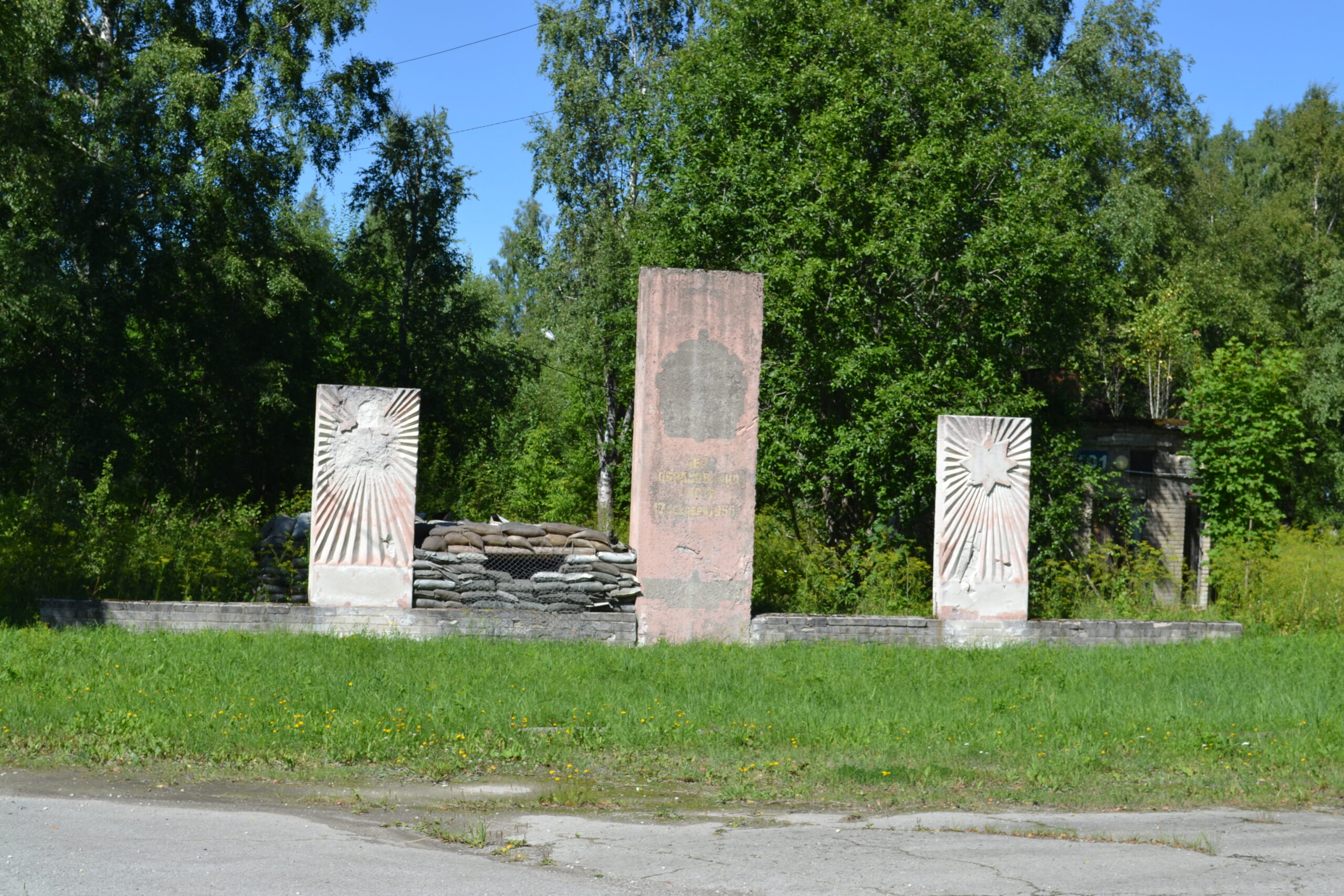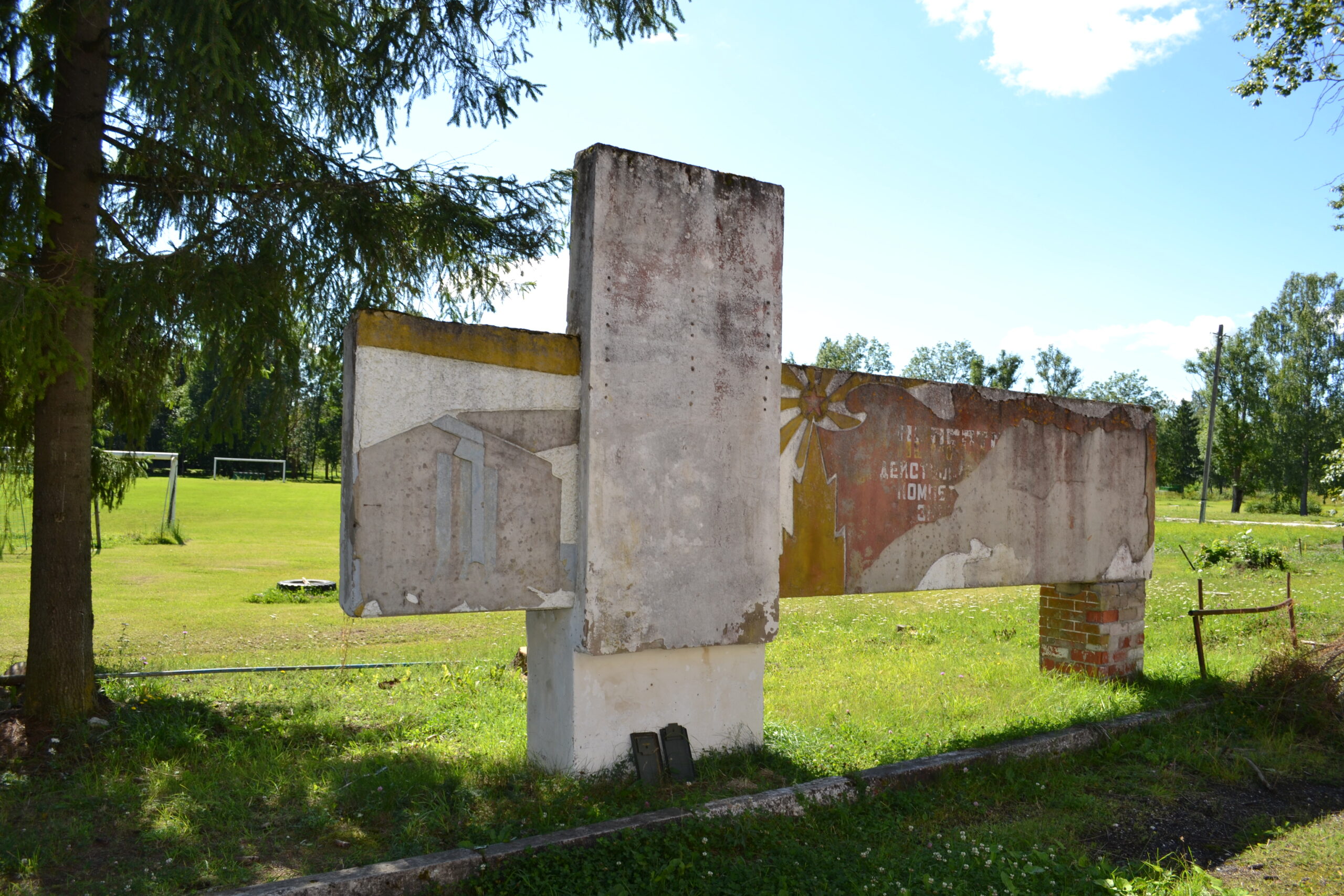Mosaics in Tapa Infantry Brigade’s Military Dining Room
Time of completion unknown
Address: Lääne-Viru County, Tapa, Tapa Army Base
Author unknown
Not listed as a cultural monument
In the 1920s, the army base of the Armoured Brigade’s Armoured Train Unit belonging to the Republic of Estonia was founded in the midst of Tapa manor. In March of 1963, the Soviet Military Engineering training centre was moved here, and there are several known combinations of its monumental paintings. Near the brigade’s main gate is a parade ground with two decorative walls, and one engineers’ machinery garage had optical illusion artwork on its doors.
The most notable monumental art combination, however, is situated in the dining room constructed in the 1950s. The upper parts of walls in a smaller room (a hall for the officers?) have had motifs of leaves, fruits, ears of cereal plants, and foods (samovar, breads) painted both freehand and with stencils. The main room exhibits a high-level glass-mosaic extending over two walls, which has survived almost in its entirety. The mosaic depicts unconventionally non-military images – the sun, birds, sea waves, fish, and fruit trees and in a smaller section, foods laid out on a cloth, with flowers and ears of cereal grains in the background. In the middle of the composition is a maiden who offers bread and salt from the cloth as a greeting. The motif is clearly Slavic in nature but the maiden’s traditional clothing refers to either Baltic-Finnish or Baltic heritage.
Although military-exclusive art like this (such as the brigade’s main entrance, a festive flag square or parade ground a decorative wall; illustrative images of propaganda- and safety teachings etc.) was authorized, it was generally targeted at soldiers and inaccessible to the public. The clients were mostly dilettantes (e.g. officers responsible for propaganda and upbringing) but the creators were conscripts with prior art education or experience. In total, the estimated number of military-exclusive authorized artworks in Estonia was a couple thousand, but only around 150 have survived, which are all situated in remote places and perish quickly.
The dining building in Tapa is in poor condition. The paintings of the small room are breaking down, but the two mosaic walls in the bigger room could be conserved as removed walls or the body of a new building. The Tapa dining building’s mosaics are extraordinary among Soviet military-exclusive art, which generally is oversaturated with military symbolism and breaks down quickly, which is why the mosaics deserve public recognition and display.
Robert Treufeldt, Hilkka Hiiop










